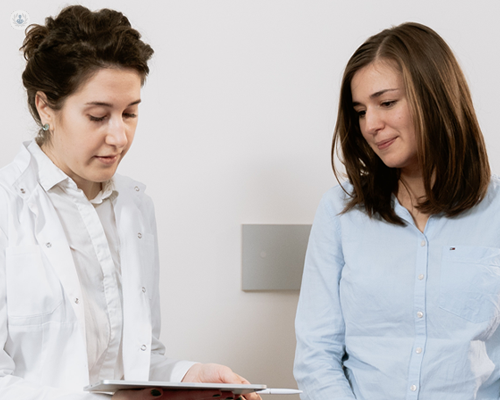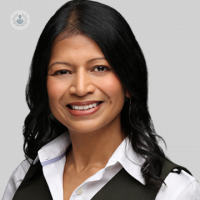What is oncoplastic breast surgery and who is it suitable for?
Written by:"The main objective of oncoplastic breast surgery is to remove the breast cancer while preserving the shape and size of the breast; sometimes even improving it."
Esteemed London-based consultant oncoplastic surgeon Ms Shweta Aggarwal explains in detail what oncoplastic breast surgery entails, who is (and isn't) a suitable candidate, and highlights some risks to be aware of.

What is oncoplastic breast surgery and who is it suitable for?
Oncoplastic breast surgery is the aesthetic part of breast cancer surgery. The best way to describe it is to think of the breast skin as the envelope and the breast tissue as filling.
When we take the cancer out, there's a cavity that's left in the breast which fills with fluid initially. If nothing's done to fill that cavity, then over time the fluid will reabsorb and be replaced by scar tissue which will contract, affect the skin as well as, and cause a deformity on the breast.
We now have to techniques where we can either reduce the envelope or bring tissue from somewhere else to fill the cavity so that we can prevent this deformity in the long term. So, the cancer is removed safely and the breast aesthetic is preserved. Sometimes even improved after cancer surgery.
Who is the ideal candidate for oncoplastic breast surgery?
Anyone having surgery for breast cancer will benefit from some kind of oncoplastic input. For smaller tumours it will be about where to place the scar and how to redistribute the remaining breast tissue. More advanced oncoplastic techniques like therapeutic mammoplasty where the breast is reshaped or reduced, or a chest wall perforator flap where tissue is brought from somewhere else will be required for larger tumours.
It's about the relative size of the tumour to the size of the breast. It also depends on the location of the tumour sometimes, so for example we know that tumours in lower part of the chest are more likely to cause a deformity.
Who isn't suitable?
If the cancer is in more than one part of the breast, or if there are multiple cancers then sometimes it may not be safe to preserve the breast and, in that case, we would recommend a mastectomy.
Also, at times if there are multiple medical problems and it isn't safe to have a longer surgical procedure and anaesthesia, then a simple wide local excision might be recommended. There also a higher risk of complications in patients with uncontrolled diabetes or smoking, or anything which compromises wound healing.
What are the main associated risks?
Plastic surgery is a relatively safe procedure with the right patients. Besides the inherent risks of surgery like infection and bleeding, if we do a volume replacement technique which means the tissue's been taken from somewhere else, then you might have an additional scar, for example on the back.
If therapeutic mammoplasty is used where the breast is reshaped or reduced, then you might need surgery on the other side of the symmetrisation.
What are the main objectives of oncoplastic breast surgery?
The main objective of oncoplastic breast surgery is to remove the breast cancer while preserving the existing shape and size of the breast. Sometimes even improving it, for example when a breast reduction or breast lift is used as part of cancer resection. For larger tumours, it can also help some patients to avoid a mastectomy.
If you are interested in finding out more about this procedure and would like to book a consultation with Ms Shweta Aggarwal, you can do so via her Top Doctors profile.


